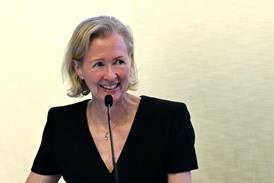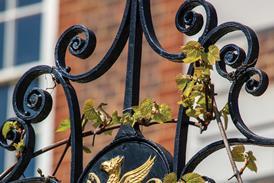Web Sites: chambers show 'maturing attitude' towards Internet, but site depth still lacking
Barristers have picked up their game in terms of on-line marketing, according to a report on chambers' Web sites published this week.
The report, by Web site development firm Intendance, identified several areas where chambers need to focus more attention in the future, such as using sites as places for updates, news and notices.
But the findings are 'encouraging', the company said in the report, and revealed a 'maturing attitude towards the Internet that demonstrates chambers' firm grasp of Web site basics'.
One of the key parts of the report is what those running chambers' Web sites thought the sites should do for their sets. None of the 34 chambers polled said its site was for anything more complex than the presentation of basic information.
According to Stephen Mason, barrister and editor of the e-Signature Law Journal, there is reluctance at the moment to move beyond using Web sites as more than clever on-line business cards.
Mr Mason is convinced that Web sites can give chambers worthwhile on-line presence, but cautioned that the business of advocacy may not need to follow general business progress towards highly functional Web sites.
'If you want more out of a legal Web site than to merely obtain access to information and knowledge of expertise, then you should go and see the person,' Mason said. 'What you really want is advice.' But, he said, basic interactivity 'is bound to be a good idea'.
A loose consensus emerged from the report that chambers see their Web sites more as shop windows than anything more dynamic, with not one chambers saying it had a 'significantly personalised' site featuring, for example, a client-facing extranet.
Also, opinion is split between what clerks and other administrative staff believe a Web site can do for a chambers and what barristers think is possible. Clerks focus on what sites can do in terms of provision of basic information - for example, taking some weight off administration - whereas barristers look to the Web to provide a far more personal connection with clients.
'A Web site is collaboration of senior members of chambers and staff to create something that clients want to read about,' said Chris Owen, chief executive at 11 New Square chambers. 'Barristers have got to think about what clients want to know about chambers, not what chambers want to present about themselves.'
Mr Owen said barristers should be more proactive about using chambers' Web sites, and sees a future where sites provide much more extranet-style functionality.
One area where Mr Owen said chambers Web sites work very well, which the report showed is currently underestimated, is in recruitment. New pupils, he suggested, now use a chambers' Web site as the primary source of information gathering and, having grown up with the technology, are much more capable of making use of it.
'We know from the information we get from our Web designer that hits went up dramatically when pupils were looking around,' he said. 'We know the Web site is a very useful tool.'
But Stephen Mason was more sceptical about the need for chambers to expect too much from Web sites, and criticised the report's central point of the importance of Web marketing.
'Barristers still primarily get their business by word of mouth, from solicitors,' explained Mr Mason. 'It's still a tightly knit market.'
Though the Intendance report stated that a chambers' Web site is an essential component of its marketing activity, Mr Mason disagreed. '[A Web site is] not an essential component of their marketing strategy - it's erroneous to suggest that. What it can do is to reach out to potential clients direct, which is a whole different model.'
The report meanwhile found that those chambers that have taken on Web site building in-house spend far less on their sites than those who farm out the work, and suggested that this means the site's potential has 'not been fully recognised'. Nearly four in ten chambers polled spent less than £5,000 on having a site built, with 46% spending between £5,000 and £20,000. Only 15% of chambers built their sites in-house.
But the report polled only larger chambers, and Mr Mason said this does not relate to how most barristers practise.
'If you take your average barrister in family law, they may only be earning a modest living. The question is whether they are going to spend £5,000 on a Web site. The answer is no.'
But Chris Owen at 11 New Square argued that barristers are waking up to the value of the Web and are looking more to business to point the way.
'The bar is a very conservative profession and needs to go on to the next stage, but I think we're getting there.'
Intendance's absolute basics for chambers' Web sites:
Charity Explorer provides a reputable reference tool for solicitors, will-writers and their clients who want to leave a legacy or charitable gift.
Visit Charity Explorer
Whether you are looking for legal expert witnesses, legal training/CPD providers, international law firms, administration of estates, legal software suppliers, barristers chambers or any other general legal service, the Legal Services Directory will provide a suitable option.
Visit Legal Services Directory

























No comments yet